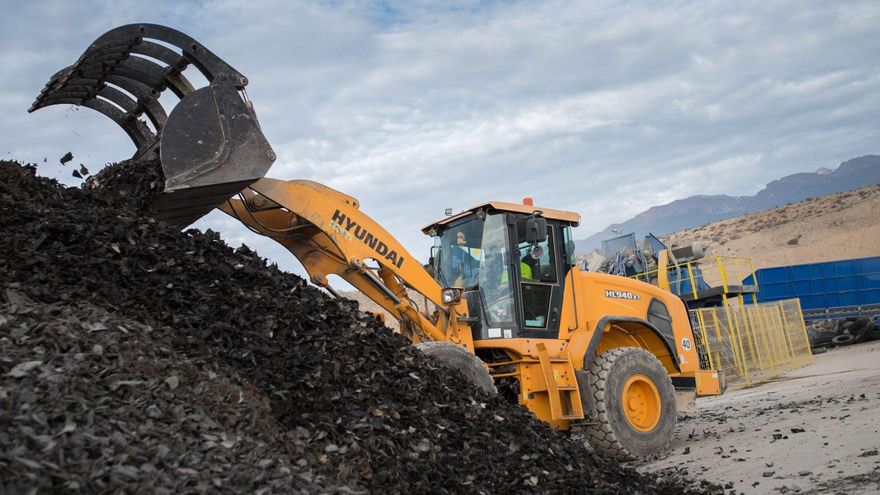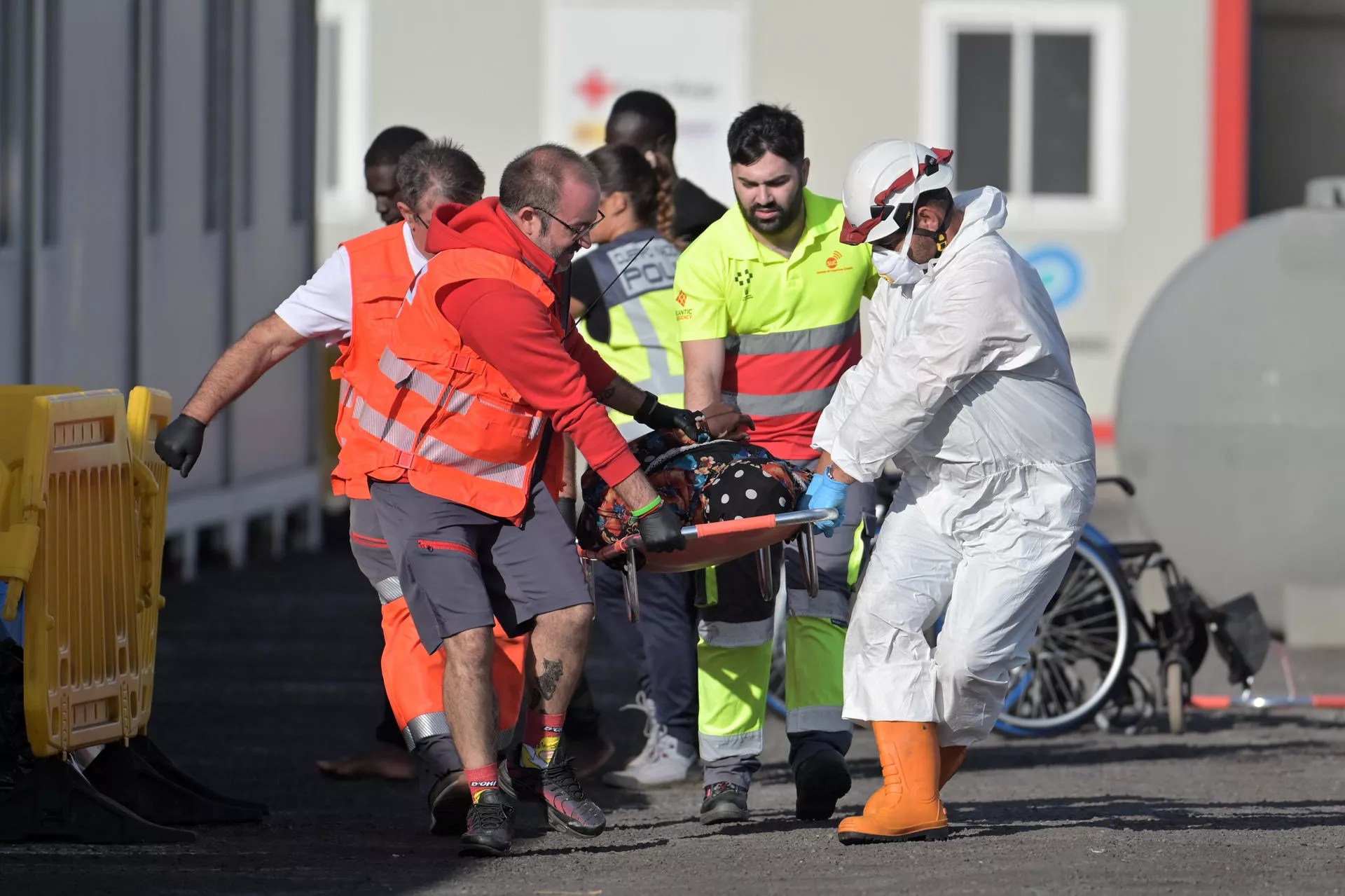
The Sustainable Development and Fight against Climate change del Cabildo has just put out to tender the private exploitation of a public plot of 25,000 square meters of the Environmental Complex for the installation of a plant with state-of-the-art processing. There is none of this kind in Canary Islands and only 11 in the Peninsula. The winning company will be able to occupy these lands for 15 years –expandable to 20– with a plant that, in addition to conventional recycling, will be able to incorporate three new heat treatments: pyrolysis, gasification and plasma. The contest excludes incineration, one of these high-temperature treatments that make up the energy recovery as it is not contemplated in the Canary Islands Waste Plan (Pircan).
What is energy recovery? It is the new bet of the Cabildo to face a big problem. They are methods of decomposing garbage through chemical and electrical processes in which an energy yield is obtained. The energy is extracted from the heat generated by the treatment itself or from the resulting waste in its different forms: gas, liquid and solid. But not all of the waste creates energy, and not all of the waste is turned into fuel. One part is thrown away. Those that the Cabildo now allows for the first time in the Environmental Complex are based on heat in the absence of oxygen (pyrolysis, with temperatures of 300 to 800 degrees), oxygen to destroy matter (gasification, with temperatures above 750 degrees) and a electric field (plasma process, with temperatures of 4,000 degrees and above). The latter, unlike the previous ones, allows treating gases and hazardous waste.
The European Union does not give priority to energy recovery in its preferences for waste management. These go through the reduction of waste generation and recycling (material recovery). Energy recovery is in third place and in last place is the solution that Europe advises the least but to which it has been resorting the most Tenerife: compact and accumulate the remains that cannot be reused in a cell. Precisely the key to this bet is in the abuse of this solution, the most unsustainable. It is exposed by the Cabildo in the documentation of the conditions of the contest. Ensures that of the 542,320 tons treated in 2019 by the Environmental Complex, 226,756 came from domestic waste generated by the municipalities of Tenerife. And of these 226,756 tons, 150,756 “are destined for disposal in the dump cells”, 60%. “The purpose of the tender is precisely to promote the recovery of this waste in order to reduce the amount destined for disposal”, appears in the administrative specifications.
The Councilor for Sustainable Development and the Fight against Climate Change of the Cabildo de Tenerife, Javier Rodríguez Medina, confirms this objective. “The increase in reuse percentages, recycling or recovery of waste implies that the amount of waste to be dumped into the cell will decrease, which will have a very significant impact on the duration of the useful life of the waste cells ”. Rodríguez Medina considers it “important” to highlight that the object of the tender “does not focus on treating waste exclusively with this technology, but includes any other type of technology except incineration.” In fact, it ensures that “recycling is prioritized over any type of recovery”, as stated in section 5 of the tender clauses: “In the event of a tie between two or more bids, the concession will be awarded to the bidder that it has proposed a recycling operation as opposed to other forms of recovery ”.
The winning company of the contest will be entrusted with treat through recycling or heat treatments 76,000 tons per year of those 150,000 leftovers that end up in cells. It will have to take charge of all the necessary facilities in those 25,000 square meters of the Arico Complex and maintenance. In addition, you must pay a minimum fee of 81,500 euros per year. It will amortize the investment through the exploitation of the energy obtained in the different processes admitted by the contest. The matter to be treated will be composed of non-reusable, organic waste, sludge from sewage treatment plants, bulky waste and those from agriculture and livestock.
This plant will have an impact due to the use of energy for the different processes. The Counselor for the Fight against Climate Change minimizes it. «The amount of slag generated in the energy recovery of waste varies enormously between the projects that have been proposed to the Cabildo. In any case, examining the proposals offered, it can be stated that the generated slag does not correspond to hazardous waste and that they are not generated in significant quantities given the high performance of these industrial processes. In the event that said slag had no other use, these would be destined to the dumping cell, always in quantities much lower than those that would be dumped if they were not previously treated, ”clarifies Rodríguez Medina. It adds that the projects exhibited by the companies in the sector “do not generate practically any pollution since the heat or gases (especially CO2) generated in the combustion of the waste are in turn reused in the industrial process of production of the recovery product. (bioplastic, biofuel, etc.) ‘.
The councilor of the Cabildo emphasizes that the thermal treatments included in the contest “exclude incineration”, which, even though it is legal in Europe under very controlled conditions and under severe demands, is not contemplated for the Canary Islands. Experts confirm that even if the waste is subjected to very hot conditions, pyrolysis, gasification and plasma are not legally considered incineration. They refer to the Industrial Emissions Regulation approved in Royal Decree 815/2013. It defines as an incineration facility “any technical unit or equipment, fixed or mobile, dedicated to the thermal treatment of waste with or without recovery of the heat produced by combustion, through incineration by oxidation of waste, as well as other thermal treatment processes, if the substances resulting from the treatment are then incinerated, such as pyrolysis, gasification and plasma processing ”. Javier Rodríguez Medina rules out that the resulting substances will be incinerated. Therefore, it ensures that “There is no incineration.”
What there will be are chemical and electrical reactions under extreme conditions that they are part of “a technology in development, new and that can still be considered in the testing phase”. It is pointed out by Arturo Romero Salvador, emeritus professor of Chemical Engineering at the Complutense University of Madrid and one of the leading experts in Spain in energy recovery. “I do not know of any energy recovery plant that has provided continuous data to verify its performance,” he explains, to specify that “this technology has become an alternative to reduce the size of waste as much as possible and obtain energy in return.”
Arturo Romero finds it difficult to explain why high-temperature treatments are not considered incineration. «They are technical and legal nuances. The truth is that if you do not incinerate the gases, liquids and solids resulting from these treatments, it is not considered incineration. “There are other better options, such as recycling itself, but what is clear is that pyrolysis, gasification or plasma are options that greatly reduce trash space that cannot be reused», Highlights the professor of the Complutense. Another expert who considers that these processes are “relatively new” and “cannot be considered incineration” is Grau Franquet Armengol, a higher degree in Chemistry and managing director of the Urban Waste Incineration Service (Sirusa) in Tarragona. “There are few plants like these for energy recovery in Spain.” Armengol, co-author of the study Situation and Potential of the Direct Energy Recovery of Waste, carried out by the Institute for the Diversification and Saving of Energy (Idae), admits that there are “controversies” around the pros and cons of these heat treatments, especially incineration. It refers to Europe’s priorities: reduce waste, recycle, recover and dispose of what cannot be reused.
Regarding the fact that it is a technology that can be considered in the testing phase, the councilor of the Cabildo de Tenerife states that “in reality there are several projects in the United States, Europe and in our own country that have already been verified and are currently in full production.” “They use pyrolysis and gasification as part of the waste treatment. It is true that in the case of plasma there are fewer contrasted experiences despite the fact that there is knowledge of promising pilot experiences». Different proposals of this type have reached the island government “in the last two years,” explains Javier Rodríguez Medina. “The companies in the sector have presented us with proposals for energy recovery waste treatment plants based on pyrolysis, gasification, plasma and / or the combination of several of these techniques. As proof of this, of the more than 20 companies that have requested public land from the Environmental Complex for the establishment of recycling plants, more than half base their technology on one of these three methods ”.
The Cabildo did not specifically contemplate these models in the tender for the management of the entire Arico Environmental Complex, awarded in March of this year for 15 years and an amount of 397 million euros. In this regard, the Minister of Sustainable Development replies: «The file began its processing in 2018. At the time of the drafting of the specifications, the object of the contract was focused on increase the percentages of recovery of household waste and in no case to their recovery, leaving the destination of the waste recovered as part of their own business at the discretion of the successful bidder (delivery to authorized managers, recycling, subsequent recovery, etc.). Only in the case of organic matter, these specifications do define that it must be biostabilized in the case of the remaining fraction or composted in the case of that from municipal collection. However, Rodríguez Medina clarifies that «the system of bonuses and penalties included in the specifications promote any alternative solution to that of dumping in a cell, which, indirectly, allows the use of any other technology in recycling or the subsequent recovery of the recovered waste as can be the case of technologies based on pyrolysis, gasification or plasma ».















